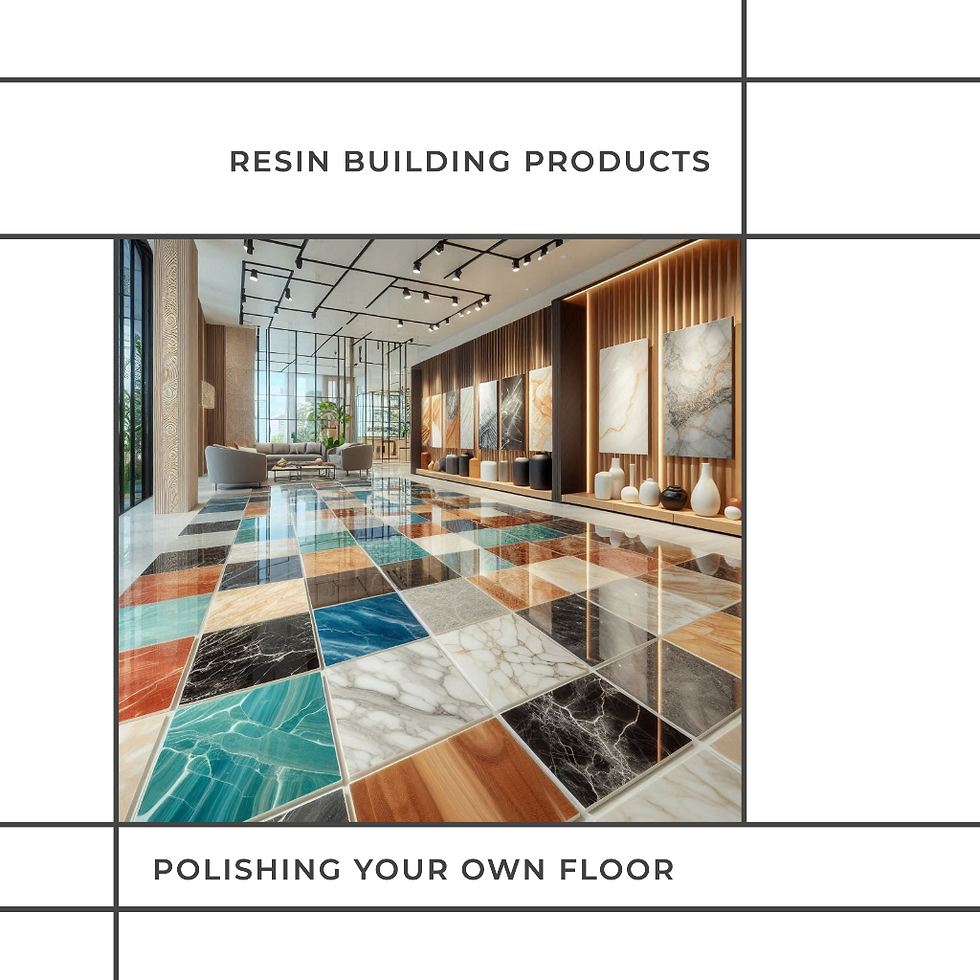Concrete Canvas: A DIY Guide to Polishing Your Floors
- Dhrubojyoti Mukherjee
- Jul 19, 2024
- 3 min read
Polished concrete floors are a rising trend in the UK, gracing homes and businesses alike. Their sleek aesthetics, durability, and low maintenance appeal make them a popular choice. But what if you don't want to break the bank on professional installation? Here's a breakdown of the 3 key steps to polishing your own concrete floor in the UK, along with some alternatives to consider.

Before You Begin:
Safety First: Always wear appropriate safety gear, including goggles, dust mask, gloves, and sturdy footwear. Concrete dust can be harmful, so proper protection is crucial.
Surface Suitability: This process works best on existing, structurally sound concrete floors. Uneven surfaces or floors with significant cracks might require professional attention.
Testing and Renting: Test a small, inconspicuous area first to ensure desired results and assess your comfort level. Renting necessary equipment like grinders and polishers might be more cost-effective than purchasing them for a single project.
Step 1: Grinding Away Imperfections
The first step involves grinding the concrete to achieve a smooth, level surface. Here's what you'll need:
Concrete Grinder: A rental shop can provide a grinder with various diamond-abrasive grits.
Diamond-Abrasive Pads: Start with a coarse grit (30-60) for initial grinding and gradually progress to finer grits (100-300+) for a polished finish.
Grinding Process:
Clear the Floor: Remove furniture and thoroughly clean the concrete surface. Patch any cracks or holes with suitable concrete repair products.
Rough Grinding: Begin with the coarsest grit pad and grind the entire surface in a circular motion, applying moderate pressure. Overlap your passes to ensure even coverage.
Progressive Refinement: Change to progressively finer grit pads, continuing to grind the surface systematically. Vacuum frequently to remove dust and inspect your progress.
Final Touches: After using the finest grit, the surface should feel smooth to the touch. Buff any minor imperfections with a hand-held concrete polishing pad.
Alternatives to Grinding:
While grinding is the traditional method, consider these options if you have a smaller area or prefer a less aggressive approach:
Chemical Hardeners: Apply a chemical hardener after cleaning the floor. This penetrates the concrete, enhancing its density and creating a more polished appearance.
Epoxy Floor Coatings: These can be applied directly to existing concrete, offering a decorative and durable finish with various colour and texture options. However, ensure the concrete is properly prepared and moisture-free before application.
Step 2: Filling the Pores (Optional)
Concrete naturally has small pores that can trap dirt and grime. While optional, filling these pores with a concrete densifier can further enhance the polished look and improve stain resistance.
Concrete Densifier: Apply the densifier according to the manufacturer's instructions, typically involving a liquid solution that penetrates the concrete.
Step 3: Polishing to a Shine
This step brings out the concrete's natural shine and creates a smooth, reflective surface.
Polishing Pads: Use a polisher with progressively finer polishing pads (usually resin-bonded) to achieve the desired level of shine. Start with a medium-grit pad and work your way to finer grits.
Buffing: Apply a final buffing with a soft pad to remove any minor swirls or imperfections.
Anti-Slip Considerations:
While polished concrete floors are generally slip-resistant, consider adding an anti-slip coating in areas prone to moisture, such as kitchens, bathrooms, and entryways.
Anti-Slip Paint: Apply a specialised, clear, anti-slip paint specifically designed for polished concrete. These paints come in various textures to enhance slip resistance without compromising aesthetics.
Textured Finishing: During the grinding process, you can opt for a slightly textured finish instead of a high-gloss polish. This provides inherent slip resistance.
Beyond Concrete: Alternatives to Consider
If a DIY concrete polishing project seems daunting, several alternative flooring options offer a similar aesthetic:
MMA Flooring: A fast-curing, methyl methacrylate-based flooring solution often used in commercial spaces. It provides a seamless, high-gloss finish but requires professional installation.
Epoxy Flooring: A versatile and durable option available in a wide range of colours and finishes. Epoxy flooring can be applied over existing concrete and offers good slip resistance.
Conclusion:
Polishing your own concrete floor can be a rewarding DIY project in the UK, offering a beautiful and low-maintenance flooring solution. Remember, thorough preparation, proper equipment selection, and a methodical approach are key to achieving a successful result.



Comments